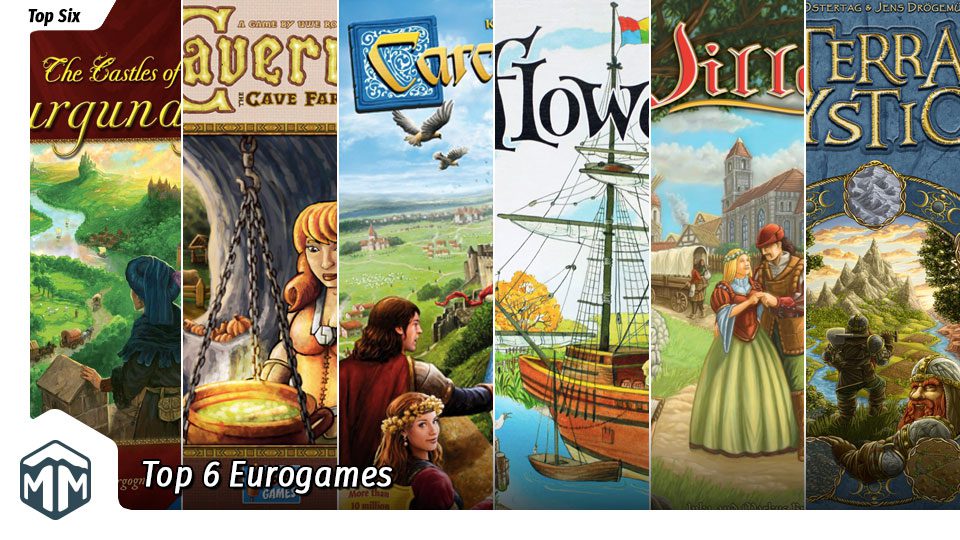For most of the world at large, their only experience with a board game is a long forgotten family night in which everybody fought over a game of Monopoly or got bored playing the game of LIFE. That was me once upon a time, but times have changed. Catan introduced me to a new kind of game – one with more choices, more pieces, and more depth – the Eurogame. I have never looked back.
So, what is a Eurogame exactly? Eurogames normally involve a lot of indirect player interaction. They are typically very heavy on theme with a hefty amount of competition over resources or victory points. These types of games tend to focus more on skill and strategy while trying to downplay the role of luck. Many Eurogames are also well known for their components; very detailed, great in number, and often crafted out of wood.
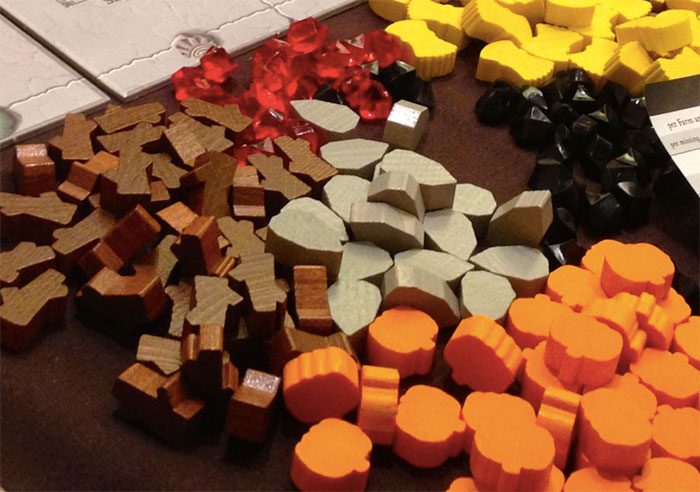
While the exact mechanics of the games will differ greatly, there is always a sense of having to make difficult choices and never being able to do everything that you want to do.
I enjoy the brain-testing challenges that these games bring. I enjoy formulating a strategy and then putting that strategy to the test, and I particularly enjoy it when my strategy is successful. Playing heavy Eurogames brings me a sense of joy and satisfaction that I just can’t find anywhere else. In no particular order, here are some of the best Eurogames out there.
The Castles of Burgundy – Stefan Feld
In The Castles of Burgundy, each player is provided an empty estate board that is divided up into various colors. These colors are divided up into hexagonal sections. During the course of the game, the players will be rolling two dice on their turn and using these to collect and place hexagonal tiles from a central supply onto their estates.
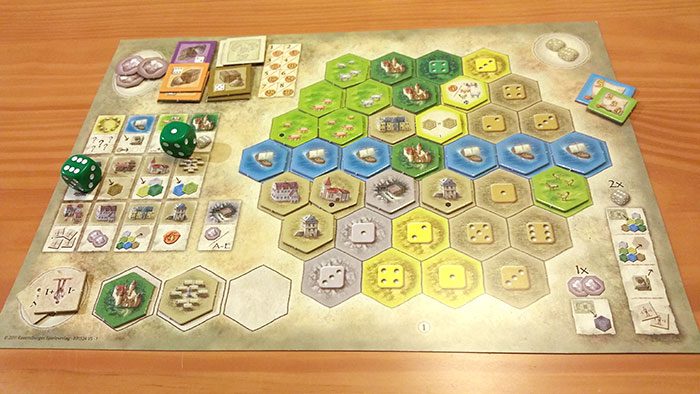
Each of the tiles has a different ability that fires off as the tile is placed. For instance, placing a Carpenter’s Workshop into your estate will let you place any of the face up building tiles from the supply into your storage area, while placing a Castle tile will allow you to perform any of the possible actions. If a colored in area is completed, then the player earns points for the size of the area and bonus points based on the round of gameplay in which the area was filled in. Bonus points are also awarded to the first and second player to fill in ALL of a particular color on their estates. At the end of the game, the player with the most points is victorious.
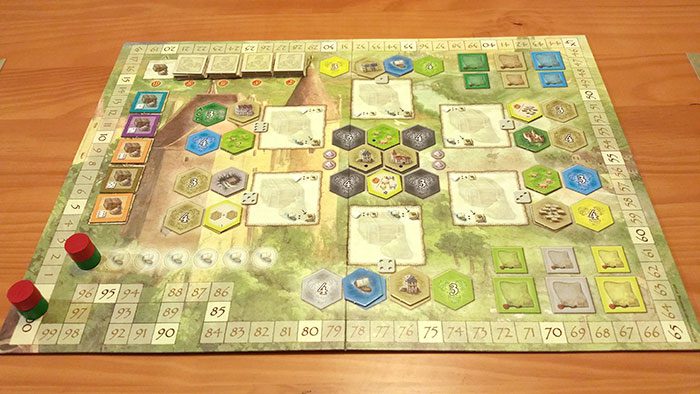
One of my favorite aspects of this game is how some of the tile abilities allow me to chain the abilities of other tiles. There’s nothing like the feeling of figuring out a way to pull off three actions with a single die. The real challenge in this game comes from figuring out how to best use your dice rolls – helpful or not so helpful – to expand your holdings. As simple as that sounds, it never is. It is for these reasons and many more that The Castles of Burgundy is on this list.
Caverna: The Cave Farmers – Uwe Rosenberg
In Caverna, each player controls a growing family of dwarves as they work to improve their cave dwelling, build up their farm, and go on adventures. When the game is over and the dust settles, the player with the best stronghold wins.
Caverna is a pretty hefty game both in physical terms and in gameplay terms. The meat of the game takes place on a central action selection board. At first, there are just a few generic actions available, but a new action gets added with each subsequent round. In addition to this action selection area are several smaller boards which house various tiles that can be purchased and added to the players’ strongholds. It is through these additions that players ultimately earn the victory points that will determine the winner of the game.
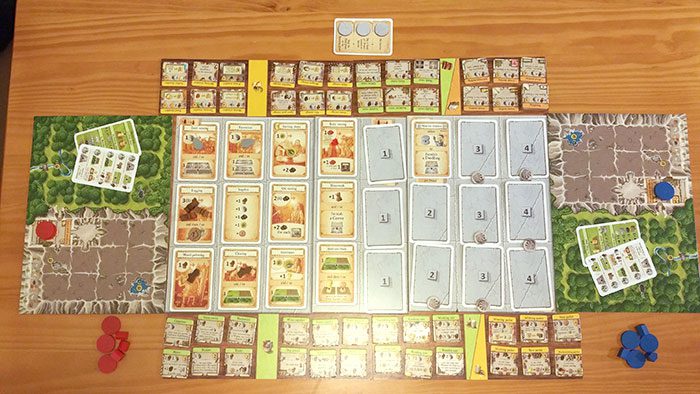
One of the features of this game that really shines is the ability to go on adventures with your dwarves. Whenever a dwarf goes out on an expedition, that dwarf gains a level of experience. The dwarf’s experience level directly affects the rewards that the player can choose from. These rewards range from very basic things like receiving a free resource to better rewards like deep discounts on expensive tiles.

Caverna is a very satisfying experience and a lot of fun to play. It’s very challenging and absolutely oozing with theme. These things and the fact that the game can accommodate a large number of players (up to 7!) are just a few of the reasons that you need Caverna in your life.
Carcassonne – Klaus-Jürgen Wrede
This game is a classic. The rules are simple. Pick up a tile and place it. Then you can place one of your meeples onto the tile as long as the feature you’re placing it on doesn’t connect to a feature where someone else has already placed one of theirs. If this tile placement completes a feature, then you score points and get your meeple back. The gameplay itself, though, is anything but simple.
Knowing where to place your tiles and when to place your meeples are skills that can only be acquired through a lot of plays. Your first few games will most likely be friendly games in which everyone is doing their own thing, but you will soon come to realize that this is not an optimal way to play. After that, it can start to get pretty cutthroat as the players attempt to horn in on each other’s features and to deny each other scoring opportunities.

That’s just one reason Carcassonne is such a great game. It evolves as the players evolve. Another thing that really helps Carcassonne to stand out is that there are quite a few expansions that add a lot of different and interesting elements to the game. Some of these expansions, with the addition of just a handful of tiles, change the game so much that it almost feels like playing an entirely different game.

Carcassonne’s simple rules, its approachability, its expandability, and its replayability are why Carcassonne is one of the best games ever made.
Keyflower – Sebastian Bleasdale and Richard Breese
Keyflower is probably best known for its distinctive auction system. The game is divided into several seasons. Each season, several tiles will be put up for auction. These tiles will eventually be added to your village. The person that wins the auction for a specific tile will be able to add that tile to their own village. The players bid on these tiles using their different colored meeples that they receive during the course of the game. These same meeples are used to produce the various resources. Which meeples you use to bid and which meeples you use to take actions depend entirely upon the color of the meeples in question and whether or not anyone else has already used the action before you.
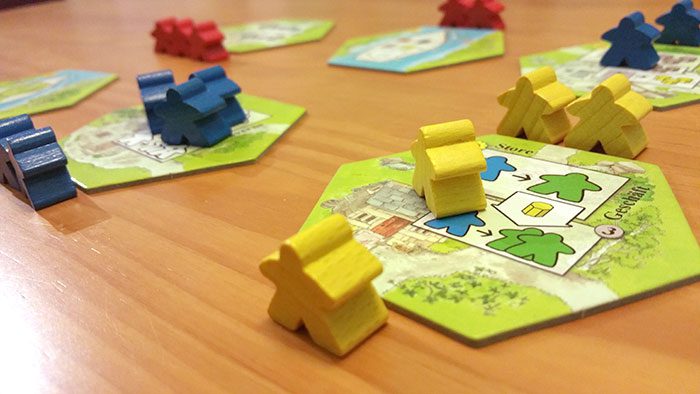
Winning a tile means losing the meeples that were used in the bid. Bidding on a tile means fewer meeples to produce resources. So, do you use your meeples to produce resources that are needed to do the things that generate victory points or do you use them to acquire useful tiles to add to your holdings? As the seasons play out, these questions become very important.

Having to decide between using your workforce to win tiles or hanging onto your workers for other things isn’t always an easy decision. In fact, having to make those decisions can be agonizing. But this is what makes this game so unique and so fun. Using your workers as bidding chips is nothing short of genius and that’s why Keyflower deserves a spot on your game shelf.
Village – Inka and Markus Brand
In the game of Village, each player will take control of a family in a quaint little town and guide them through the ensuing decades as they vye to acquire wealth, influence, and prestige. Each round, the game board will be seeded with resource cubes. Collecting a resource cube will give the player that selected it access to a specific action. Different actions will cost different resources and/or units of time and if a player uses up too much time, one of their family members will die and will be placed in the village chronicle. Where they are placed in the chronicle depends upon where the family member was when it started pushing up daisies.
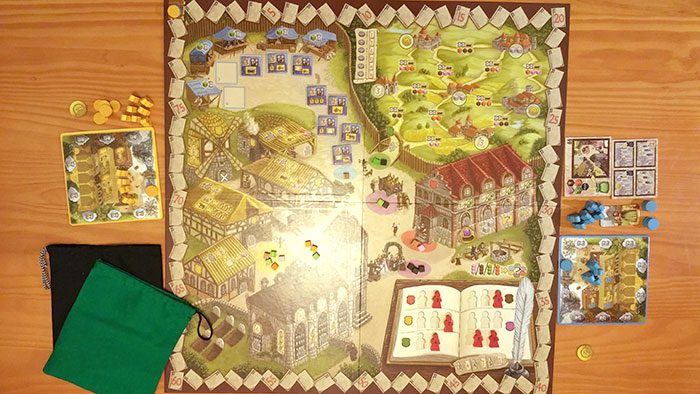
The village chronicle is where a lot of the victory points in the game come from, so there’s always a race to fill up those various spots more quickly than your opponent. However, there are other ways to score points: through exploring, trading, or gaining prestige and standing in the church and village council. Each turn in the game presents the player with a wide assortment of options, but they’re not always going to be options the players will want to choose from. Village constantly forces the players to have to make tough decisions that can literally spell the difference between life and death for one of their members. This kind of decision making and the intriguing way that Village uses the passage of time as a game mechanic are what earn this game a place on this list. It’s a great game that’s easy to learn, but hard to master and it’s oh so much fun!

Terra Mystica – Jens Drögemüller and Helge Ostertag
One of the heftiest games I have ever seen, the game of Terra Mystica finds the players controlling a particular faction of beings as they blaze a trail across an open continent. Each faction has a preferred type of terrain and also a special power that will assist them in some way during the course of the game. The players will choose an action to perform from a limited set of actions each turn. These actions will allow them to transform terrain into their preferred type, build stuff, and increase their standings in the various temples.
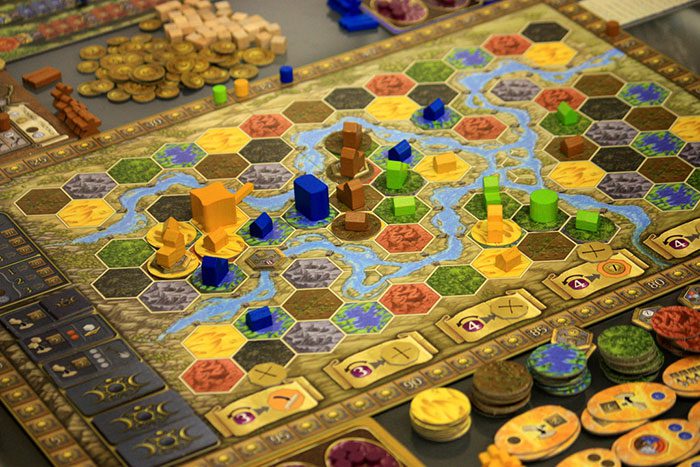
This is an oversimplification, though. Terra Mystica is probably the deepest, rules heavy games on this list. There’s so much going on in this game that it would take a lot of time to delve into it all in detail. The game is full of puzzles to solve and challenges to overcome. Because of the large number of different factions included in the box, there’s also a lot of replayability. Suffice to say, Terra Mystica is not a game for the faint of heart. However, if you’re willing to learn the game, you will discover just why it is so highly regarded.

Regardless of which game you choose, you can know one thing for certain: these games will push you to your mental limits. So, set aside a few hours, grab some friends, pull up a chair, and get set for adventure. The loser pays for the pizza!
What do you think about Top 6 Eurogames? Give us your opinions in the comments below!


